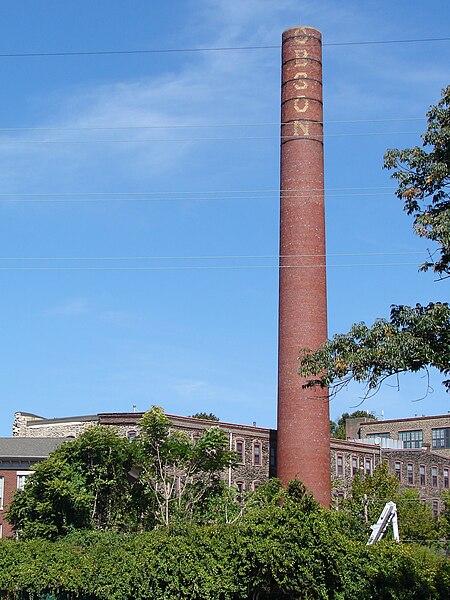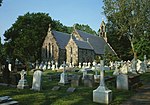Dobson Mills
Historic districts in PhiladelphiaHistoric districts on the National Register of Historic Places in PennsylvaniaIndustrial buildings and structures on the National Register of Historic Places in PhiladelphiaNRHP infobox with nocatTextile mills in the United States

Dobson Mills is a historic industrial complex and national historic district located in the Hunting Park Industrial Area of Philadelphia, Pennsylvania. It encompasses 19 contributing buildings, 2 contributing sites, and 2 contributing structures. They were built between 1858 and 1928, and are primarily of heavy timber frame construction with load bearing masonry walls. They range from two to five stories in height. The complex included blanket, overcoat, and wool yarn production facilities, a carpet mill, and plush mill.It was added to the National Register of Historic Places in 1988.
Excerpt from the Wikipedia article Dobson Mills (License: CC BY-SA 3.0, Authors, Images).Dobson Mills
Scotts Lane, Philadelphia
Geographical coordinates (GPS) Address Nearby Places Show on map
Geographical coordinates (GPS)
| Latitude | Longitude |
|---|---|
| N 40.007777777778 ° | E -75.187222222222 ° |
Address
Dobson Mills
Scotts Lane
19129 Philadelphia
Pennsylvania, United States
Open on Google Maps









